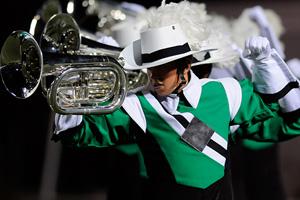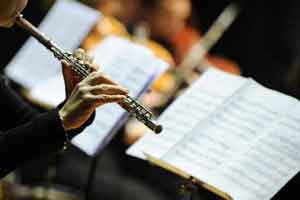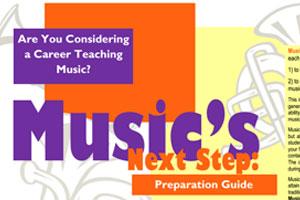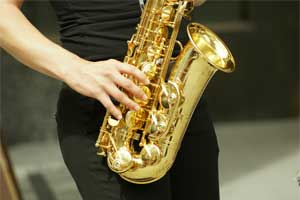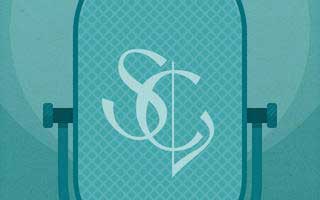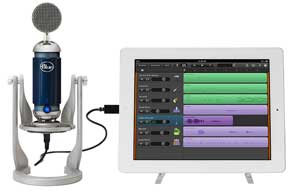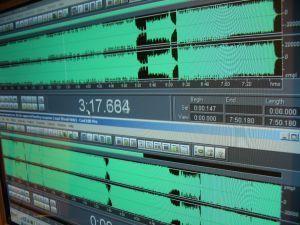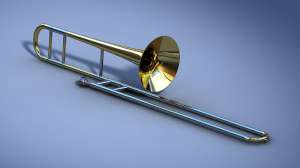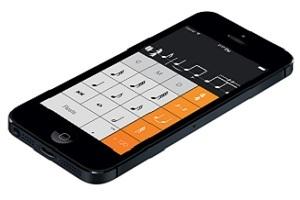- Details
- Written by Chad Criswell
If you are like me you still remember the old days when PBS or ESPN broadcast the Drum Corps International Finals. The days of free broadcasts are LONG gone, but these days you can experience the music and the pagentry in a way fairly close to actually sitting in the stands at Lucas Oil Stadium without having to travel or pay through the nose for a ticket. On August 7th, 2014, in dozens of movie theaters across the country you can pay around $17 for a comfy, air conditioned seat and get to see the show close up from the dozens of cameras that they have pointed at the field. That, by the way, is an incredible feat in and of itself so if you don't know just how intense of an event this is to setup and choreograph from a technical perspective take a look at this behind the scenes audio/video clip from one of the previous years.
Even though being at a live performance is incredible I have to admit that I like the theater show a lot better than sitting in the stands on a hard bench and in the heat. Much more comfortable and yet I still get the energy of the crowd sitting around me. Last year my theater nearly sold out so if you are worried go over to Fathom Events and buy an advance ticket. If you have ever gone to one of these live theater broadcasts please feel free to leave a comment and let us all know what you thought of it!
Are you going?
- Details
- Written by Chad Criswell
Anyone that has the chance to go to the theater to watch the annual DCI live broadcast of the semi-finals knows that the production quality of the video is just as impressive as the corps performances themselves. At any given time when a corps is on the field there are dozens of broadcast crew members running around, manning the cameras, and literally calling the shots of the show that you see. Yet we never get to see them or appreciate just how much work they do to make the show look and sound almost as good as it would be to be sitting in Lucas Oil Stadium watching it live. Video included below so read on to see it!
- Details
- Written by Chad Criswell
A very common problem for many beginning flutists is the issue of being able to get a good, solid tone on the head joint but then losing that tone when playing on the fully assembled flute. The frustration that accompanies this problem often makes the already challenging task of learning the initial fingerings even more difficult as the student often cannot tell whether it is their lip or their fingers that are the cause of the problem. To learn how to fix this tone quality issue we spoke to Emily Osby, music teacher at Stevens Point Area Public School District to learn some straight forward ways to help young flutists have a better chance at success.
- Details
- Written by Chad Criswell
July is nearly here and what a better way to keep your kids (and music students) practicing over the summer than to get them to play a little patriotic music for the family at your next gathering! Be forewarned, a lot of the composers who wrote many of the most familiar American patriotic songs did not really have beginners in mind when they wrote them. Most of these pieces are playable by beginners after about one year of training, and whenever possible I rewrote them a bit to make their easy enough for my 6th grade band classes to play. Here is the full listing of United States patriotic songs that we have available here at MusicEdMagic:
- Details
- Written by Chad Criswell
How many of you went to college, majored in music, and felt like you didn't have a clue what was going on for the first two years? Theory? Aural Training? What the heck are those things? As a group we tend to send students off to college woefully unprepared for what awaits them. As any music major can attest to there is a huge difference between what most of us were taught in high school and what we were expected to learn about in the first few years of college. Wouldn't it have been nice if someone had REALLY prepared us for what was ahead?
Someone did!
I'm happy to share this one with all of you as it comes from my very own state music association. The Iowa High School Music Association released a cool poster infographic titled Music's Next Step that helps lay out the steps a student should consider if they are seriously considering pursuing a career in music education. Download it, print it, and put it up in your room this fall. Better yet, have all of your music teachers from 5-12 do the same. The more that potential music students see this kind of thing the more likely they will be to make some good, informed decisions about the future education and career plans.
- Details
- Written by Chad Criswell
When it comes to interactive online practice solutions you don’t have a whole lot of choices for your students, especially when something like SmartMusic plays the part of the 300 pound gorilla in the room. But a few online sites are trying their best to make online practice sessions an attractive option for young beginning musicians, and some of them might just fit your particular educational situation. Here’s a rundown of some of the most recent and promising online music practice applications available.
Read more: 3 New and Cool Online Music Practice and Accompaniment Tools
- Details
- Written by Chad Criswell
A recent and interesting entry to the field of music notation software programs is ScoreCloud. Available for both Mac and Windows ScoreCloud presents itself as more than just a point and click notation tool, in fact their biggest selling point appears to be the ease of which you can sing or play notes into the program using either the ScoreCloud desktop app or the free ScoreCloud Express iOS app. In both cases ScoreCloud promises to record audio of you performing a line of music and transcribe that music into notes on the staff without needing to know the tempo or time signature of the music you are playing. Is it too good to be true? Read on to find out.
- Details
- Written by Chad Criswell
Up until now, like most musicians, I have had a bias toward using traditional XLR microphones when making recordings of myself or of my ensembles. After taking the Blue Microphones Spark for a test drive this week though I am now rethinking that assumption, especially when doing direct to PC recording sessions. The Spark has just as much clarity of sound as it does of design, and if you are in the market for a new solo mic for use with vocals, an instrument, or for podcasting it definitely warrants a closer look. Read on to find out why.
- Details
- Written by Chad Criswell
By the time our students reach the upper grades most schools see dwindling interest and enrollment in music education classes. Even in schools with strong music programs it is not uncommon to see 20% or less of the student body enrolled in music classes of any kind. As has been discussed in previous technology articles here in Teaching Music, many teachers are trying to counteract that trend by offering classes that appeal to our student’s intrinsic need to create and perform through the use of technological tools. Software programs such as Sequel, GarageBand, Pro Tools, MixCraft, Abelton Live, and many others are being used in a wide variety of these new classroom offerings, breaking down the psychological and educational barriers that had once closed this majority of students out of secondary school music programs entirely.
Read more: Music Education, Technology, and The New NAfME Standards
- Details
- Written by Chad Criswell
When compared to the complexities of the mechanics of other instruments, maintenance and repair of the slide trombone is often overlooked. Having a slide that glides quickly and smoothly is of paramount importance to the enjoyment and development of young trombonists. Being able to make minor repairs and to show how to keep a slide properly lubricated and maintained is an essential part of being a good teacher of the instrument.
Read more: The Slick Slide Guide- Trombone Slide Lubrication
- Details
- Written by Chad Criswell
When I first saw Rhythm Calculator many months ago I was impressed with the idea and was intrigued to see how it might be used with students who struggle with reading complex rhythms. Today the company is releasing an update to the app that adds several useful features that make it even more valuable as a teaching aid and as a tool for almost any musician. Read on to find out more!
Read more: Rhythm Calculator App Update Adds Value and Features

